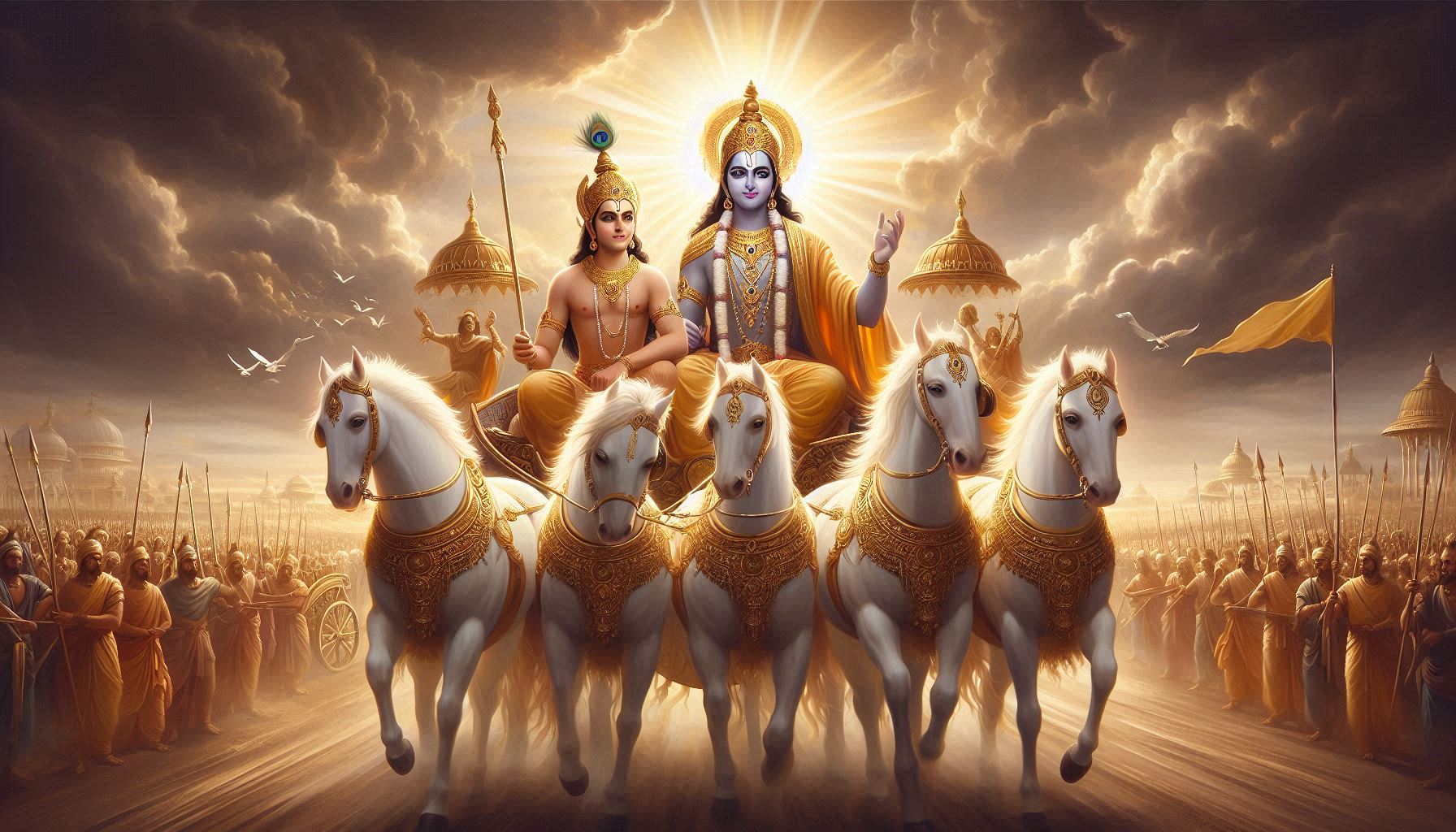
The Gita, known as the Shrimad Bhagavad Gita, is a vital part of the Mahabharata. It is a collection of 700 verses presented as a dialogue between Lord Krishna and Arjuna during the Kurukshetra war. The essence of the Gita provides guidance for every aspect of life. Reading and understanding it helps an individual attain balance, peace, and wisdom in life.
Importance of the Gita
The Gita is not merely a religious scripture; it is a philosophy that teaches the art of living. It encompasses karma (action), jnana (knowledge), bhakti (devotion), and dhyana (meditation), helping individuals understand the relationship between the soul, the Supreme Being, and the world.
In the Gita, Lord Krishna enlightened Arjuna about his duties and freed him from delusion and attachment. Arjuna, caught in a dilemma about his responsibilities and dharma (righteousness) on the battlefield, was guided by Krishna on the truths of life, the immortality of the soul, the importance of action, and the value of devotion.
Key Principles of the Gita
1. The Importance of Action (Karma)
The Gita’s most profound message is: “Perform your duties without worrying about the results.”
“Karmanye vadhikaraste Ma Phaleshu Kadachana.”
Lord Krishna emphasized that humans have control over their actions, not the outcomes. By focusing solely on their duties without attachment to results, individuals achieve both success and peace.
2. Immortality of the Soul
According to the Gita, the soul neither takes birth nor dies.
“Na Jayate Mriyate Va Kadachit.”
The body is perishable, but the soul is eternal and indestructible. Death is merely the soul’s transition from one body to another. This knowledge liberates humans from fear and material attachments.
3. Dharma and Duty
In the Gita, dharma means fulfilling one’s responsibilities. Lord Krishna inspired Arjuna to perform his Kshatriya (warrior) duties. Every individual’s dharma is defined by their responsibilities. Neglecting one’s duties leads to failure in life.
4. The Significance of Yoga
The Gita categorizes yoga into three primary types:
- Karma Yoga: Performing selfless actions.
- Jnana Yoga: The path of knowledge and understanding the soul and the Supreme.
- Bhakti Yoga: Complete devotion to God.
The ultimate goal of yoga is to unite the soul with the Supreme Being.
5. Equanimity (Samattva Bhava)
Another core message of the Gita is: “Equanimity is yoga.”
“Samatvam Yoga Uchyate.”
Lord Krishna taught that one should perceive every experience—joy or sorrow, gain or loss, victory or defeat—with equanimity. This balance brings peace and stability to life.
6. The Path of Knowledge (Jnana Yoga)
Knowledge is the means to understand the soul and the Supreme. Self-realization dispels ignorance and leads to enlightenment.
7. Selfless Action (Nishkama Karma)
Actions should be performed without any selfish motives. Selfless work liberates individuals from worldly bonds.
8. The Principle of Prakriti and Purusha
The Gita delves into the concepts of Prakriti (nature) and Purusha (soul). These two are the fundamental elements of creation, with the soul (Purusha) being beyond the physical world (Prakriti).
9. Freedom from Attachment and Ignorance
Ignorance and attachment are the greatest enemies of human life. The Gita teaches that self-realization helps individuals transcend delusion and attachment.
10. The Practice of Yoga (Spiritual Discipline)
Yoga is the means to unite the soul with the Supreme. The Gita emphasizes four primary yogas:
- Karma Yoga: Dedication in actions.
- Jnana Yoga: The path of knowledge.
- Bhakti Yoga: Devotion as the way to God.
- Dhyana Yoga: Realizing the self through meditation.
Inspirational Verses from the Gita
- “Yada Yada Hi Dharmasya Glanir Bhavati Bharata.”
Whenever there is a decline in righteousness, I manifest myself. - “Sarva-Dharman Parityajya Mam Ekam Sharanam Vraja.”
Abandon all duties and take refuge in me; I will free you from all sins. - “Na Tvaham Kamaye Rajyam Na Swargam Na Punarbhavam.”
I desire neither the kingdom, heaven, nor rebirth; my goal is to follow dharma. - “Uddhared Atmanatmanam Na Atmanam Avasadayet.”
One must elevate oneself through self-effort and not degrade oneself. - “Yuktahara-Viharasya Yukta Cestasya Karmasu.”
Balance in diet, recreation, and actions is essential.
The essence of the Gita provides a new direction and purpose to human life. It is not just a religious scripture but a profound philosophy that emphasizes the importance of the soul, actions, and dharma.
By studying the Gita and incorporating its principles into life, individuals can achieve not only personal success but also contribute to peace and harmony in society and the world.
“The Gita is a mirror reflecting every aspect of human life.”
















